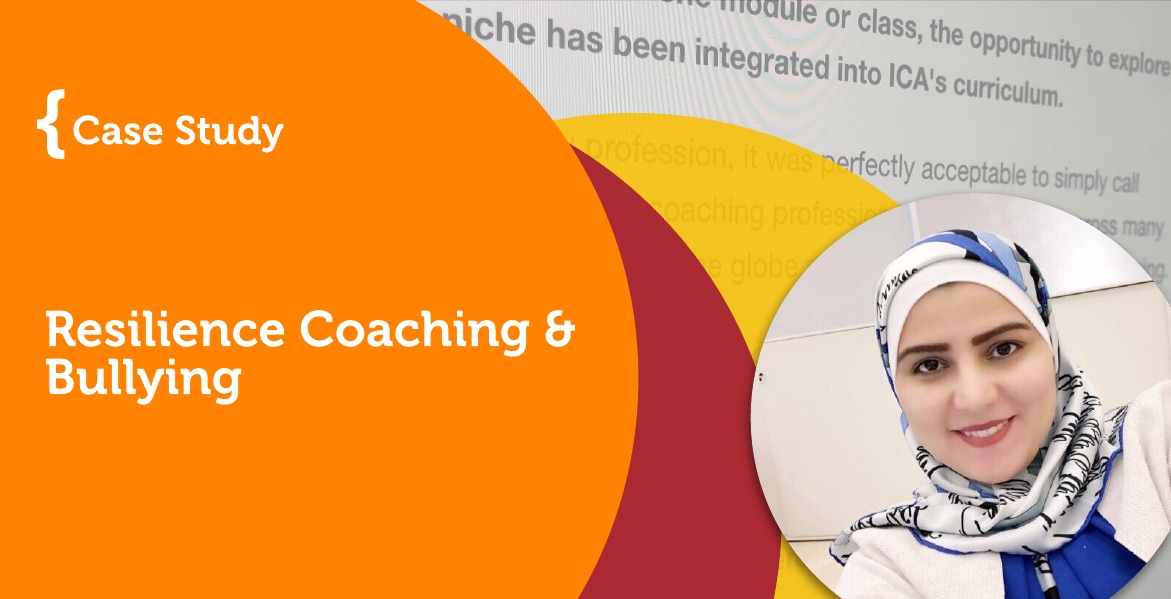
Coaching Case Study By Bana Biri
(Women from the Middle East Coach, CANADA)
Persistence and resilience only come from having been given the chance to work through difficult problems. Gever Tulley
Introduction:
Life keeps giving us opportunities to expand and move forwards sharpening our skills and gaining more wisdom but these opportunities are mostly tough and not pleasant.
Case Study:
This case study is about my son and I know how difficult it’s to work with a family member. In 2018, we moved from Qatar to Canada and it wasn’t easy for every one of us. We left everything we knew and we had and moved where almost nothing is familiar or known. It was exciting & difficult for both of my boys. Once they started the new school, my elder son, Mamdooh, who was 11 years old, started to complain from bullying.
I told him that I’m happy to support in the way he wishes and I’m ready to step in when he chooses. In the beginning, he chose to go to the Vice Principal and complained then he decided that he will give the bully another chance and will report if things kept going wrong.
But as you may think, things went worse since bullies don’t appreciate giving them another chance. At that point, I started using coaching questions. It was difficult for me to see my son crying and struggling with his own thoughts and emotions. It was painful to sense his pain. He was doubting himself. Feeling isolated, lonely and not enough by all means. The nasty words of the bully reached his core. But as a Resilience Coach, I had to use coaching questions and started working with him to help him “bounce back”.
The school was very cooperative, they talked to the father of the bully but it didn’t affect the situation, they offered us a chance to move him to another class. Here my son refused and told them that he might face another bully there and he needs to get through this. Also, he felt sorry for the effort he put building new friendships with other students. I was proud of him when he showed his understanding that he needed to build the skills which will enable him eventually to face such situations.
We had to work on 4 different aspects:
We started with reviewing the reality, I hold the space for him to talk about what’s happening with him and the details of his story from his perspective. I asked him questions to help him express what does he believe about himself and the bully.
I helped him listen to his thoughts and asked about limiting beliefs and worked with him to label and manage his emotions.
Later, we discussed what’s expected from the school. What are the options he had and how he will move forward with it and how his response in case of each scenario?
Among the most critical elements, were discussing how he looked at himself, what were his beliefs about himself. Making sure that we can.
Here are some examples of the questions I used:
Regarding his emotions:
And a lot of silence was needed there in the presence of his tears.
Regarding thoughts and beliefs:
Designing Action
He started to avoid talking back to the bully and showed some understanding when he knew that the other boy was struggling in his academic and had the previous record of bullying other students. He showed respect and offered help when that boy needed (he offered utensils a few times). And we had to make sure that these were genuine actions and not to please the bully.
Using VIA Character Strength
We did the Values in Action – Character Strength test and we noted that Humor was his first value and we had almost 30 minutes trying to figure out ways of using humour to deal with that situation. To be honest that was a big deal.
Days went by and things were getting better.
Now, …
This year, each one of them is in a different classroom. My son nominated himself to join the Student Parliament in School. I was so happy when he showed me the poster he designed (see below) and talked about his campaign.
Anti-bullying was his first thing to mention. He talked about the techniques he learned through his journey and he said that he understood how bullied kids feel and he can support and help them.
He considered that experience as a strength now. I was proud of him. But I was grateful for the coaching questions I used, as I know for sure that if I had to talk to him and tried to help to say positive affirmations about him would never help him gain the wisdom and build his resilience.
I’m sure that if I read and search I will find a good and positive correlation between coaching and helping kids in similar situations. But that was my experience, I had to use the tools I had without guarantee and I’m thankful that they worked successfully.
